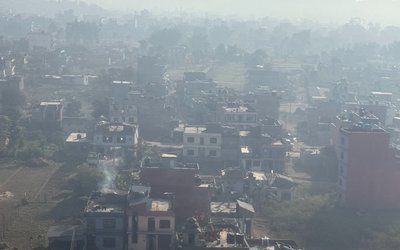
Today is a very important day in the Hindu calendar. Today is auspicious Skanda Shasti, also known as Kumar Shasti. Hindus in Nepal and India will observe as the Skanda Shasti Hindu festival.
According to Hindu Panchang, the Skanda Shasti which falls in Jyestha maas is dedicated to Lord Kartikeya or Skanda. This holy Shashti festival derives its name from the fact that it falls on the sixth day of the lunar fortnight, according to the Hindu lunar calendar.
Today is Sithi Nakha for the Newar Community of Katmandu. Sithinakh is a religious and eco-friendly festival celebrated in the Newar community by cleaning the water sources.
This festival is celebrated on every Shukla Paksha Sashti tithi of each Hindu calender month.
Skanda Sashti or Kanda Sashti? Skanda Sashti is also known as Kanda Shashti is celebrated to worship Lord Skanda, who is an avatar of Lord Kartikeya, son of Lord Shiva and Parvati. During this Sashti, devotees keep vratam, observe fast, sing Skanda Sashti Kavacham, and perform Sabramanya Shasti Pooja. It is one of the major southern festivals that glorifies Lord Skanda or Sabramanya.
In the Skanda Purana, it is mentioned that the demons under the commands of Tarakasura along with Simhamukha and Surapadma created havoc in the heavenly abodes of different gods and goddesses. It was Lord Skanda who defeated all these demons and freed the gods. Generally, people are aware of Ganesha Chaturthi that happens in Bhadrapada (Aug-Sept) but Sankashti Chaturthi and Vinayaka Chaturthi are also significant as both are related to Lord Ganesha.
So far as Skanda Sashti Vratam is concerned, the auspicious tithi is when Sashti Tithi happens withPanchami Tithi. Skanda Sashti Vratam may be observed on Panchami Tithi.
According to experts, Sithi Nakha is related to water, livelihood, public health, environment and personal hygiene. So, it should not be limited to a particular community. It must be connected with all communities in the national level as a “National Water Festival” because all need water.

On the day, people get up early and take holy bath and perform Kulpooja which is related to the personal health hygiene and prepare traditional pancake ‘Bara’ with eight kinds of beans and ‘Chatamari’ as a tribute to their ancestral god.
On the day especially the Newars of the Kathmandu Valley prepare a typical Nepali dish made of maas (black lentil), mugi “kidney beans, kasu “small peas ground, bodi “beans” and offer to Kumar.
The Newar Community cleaned the idol of Sithi Kumar at Jaisidewal on Sunday and the festival is celebrated for four days, which ends on the day of Sithi Nakha.
According to Hindu Panchang, the Skanda Shasti which falls in Jyestha maas is dedicated to Lord Kartikeya or Skanda. This holy shasti festival derives its name from the fact that it falls on the sixth day of the lunar fortnight, according to the Hindu lunar calendar.
Lord Skanda, also known as Kartikeya or Subramaniam, is the son of Goddess Parvati and Lord Shiva. Skanda Shasti celebrated at this time of year is special as it commemorates Kartikeya’s birth anniversary. Devotees of the lord observe fast either for 6 days or on the Skanda Shasti day itself.
Murugan idol is worshipped with sandalwood paste, rose water, kumkum, turmeric, and flowers. Incense sticks and a lamp is lit with ghee in it. Aarti with camphor is done as a ritual. The lord is offered naivedya -fruits, sweets and a dish named sweet pongal -prepared by South Indian households. It is then distributed as ‘prasadam’.
Those who observe fast should avoid solid food and stick to a milk diet. On breaking the fast, a ‘sattwic bhojan’ is consumed, devoid of garlic, and onion. It is believed that chanting the hymn of Skanda Shasti Kavacham, listening to Skanda Purana stories and reciting bhajans on this day purify the mind and spiritually uplift devotees.
The holy occasion is observed with great devotion, enthusiasm and grandeur
- Himalaya Airlines continues its CSR bonding with Prayas Nepal children
- Apr 17, 2025
- 550,000 Students' Future At Stake Due To Teachers' strike
- Apr 17, 2025
- Weather Forecast: Mainly Fair To Partly Cloudy In Kathmandu, Lumbini, Madhesh and Surkhet
- Apr 17, 2025
- Pakistani Embassy In Kathmandu Hosted A Reception On 85th National Day
- Apr 16, 2025
- Earthquake Rocks Kathmandu Valley
- Apr 16, 2025















